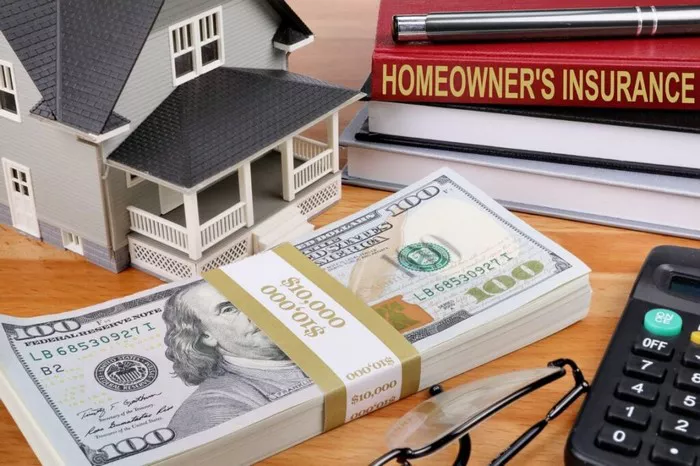Home insurance premiums can rise for a variety of reasons, leaving homeowners puzzled about the cause behind the increase. Understanding why your home insurance premiums increased is crucial to managing your insurance costs effectively. In this article, we will explore 10 common reasons for rising home insurance premiums, offering insight into factors that might be affecting your policy rates. By examining these reasons, you can better navigate your insurance options and potentially mitigate future increases.
1. Increased Risk of Natural Disasters
Natural disasters such as hurricanes, wildfires, and floods can significantly impact your home insurance premiums. As the frequency and severity of these events increase due to climate change, insurance companies may adjust premiums to reflect the heightened risk.
Insurance providers use historical data and predictive models to assess risk. If your area has experienced recent natural disasters or if predictive models suggest increased future risk, your premiums may rise accordingly.
2. Higher Home Replacement Costs
The cost to repair or rebuild your home can fluctuate based on various factors such as the price of materials, labor costs, and local construction rates. If these costs increase, your home insurance premiums may follow suit.
Insurance companies adjust coverage limits to ensure that they can adequately cover the cost of rebuilding or repairing your home in the event of a claim. If your home’s replacement cost has risen, expect to see a corresponding increase in your premium.
3. Changes in Property Value
If the value of your home increases, either due to renovations or rising real estate prices, your insurance premiums may also increase. Homeowners often update their policies to reflect the new value of their property, leading to higher premiums.
Insurers need to ensure that the coverage amount matches the current market value of the home. If property values go up, premiums typically adjust to cover the increased risk.
4. Upgrades and Renovations
Renovations and upgrades to your home can impact your insurance premiums. Improvements such as adding a new room, upgrading to a more expensive roof, or installing high-end appliances can increase the overall value and risk profile of your home.
While these upgrades can enhance the safety and appeal of your home, they can also raise the cost to insure. Ensure that you inform your insurance company about any significant changes to your property to adjust your coverage appropriately.
5. Claims History
Your claims history plays a significant role in determining your home insurance premiums. If you have a history of filing multiple claims, insurers may view you as a higher risk, leading to increased premiums.
Insurance companies assess the frequency and severity of past claims when setting rates. A pattern of frequent claims can signal a higher likelihood of future claims, prompting insurers to raise your premiums.
See Also: What Can I Claim on Home Insurance in the USA?
6. Changes in Deductible
Adjusting your deductible can impact your insurance premiums. If you lower your deductible, your premiums may increase because the insurer will assume a larger portion of the financial risk. Conversely, raising your deductible can lead to lower premiums.
Deductibles are the amount you pay out of pocket before insurance coverage kicks in. Changes in deductible levels directly affect how much the insurance company pays in the event of a claim, influencing your overall premium.
7. Location-Based Risk Factors
The location of your home plays a crucial role in determining your insurance premiums. Factors such as proximity to fire stations, flood zones, or crime rates can impact the cost of your insurance.
Homes located in high-risk areas, such as those prone to flooding or near wildfire-prone regions, often face higher premiums. Insurers assess these location-based risks to adjust coverage and pricing accordingly.
8. Changes in Insurance Market Conditions
The broader insurance market conditions can also influence your home insurance premiums. Factors such as economic downturns, changes in reinsurance costs, or shifts in industry regulations can affect overall premium rates.
Insurance companies operate within a dynamic market, and changes in market conditions can lead to adjustments in premiums. These fluctuations are often influenced by broader economic and industry trends.
9. Insurer-Specific Factors
Different insurance companies have varying pricing models and underwriting criteria. Changes within your insurance company, such as shifts in their business strategy, financial stability, or risk appetite, can affect your premiums.
If your insurer experiences financial difficulties or adjusts their risk assessment practices, this may lead to higher premiums for policyholders. It’s essential to review your insurer’s performance and policies to understand potential impacts on your rates.
10. Policy Adjustments and Coverage Changes
Periodic adjustments to your policy or coverage can lead to changes in your premiums. Updating your policy to include additional coverage, such as personal property or liability protection, can increase your overall premium.
Reviewing and adjusting your coverage based on your current needs and risk profile is essential. Changes in policy terms, coverage limits, or endorsements can impact your insurance costs.
Conclusion
Understanding why your home insurance premiums increased involves examining various factors ranging from natural disaster risks to personal claims history. By recognizing these 10 reasons, you can better manage your insurance costs and make informed decisions about your coverage. Regularly reviewing your policy and staying informed about changes in risk factors can help you mitigate premium increases and ensure that you maintain appropriate coverage for your home.






















